Architect Charles Bulfinch performed a death-defying feat in University Hall 188 years ago. He caused to be built a staircase of heavy granite, tons of it, that would float in space, supported (presumably) by its own interlocking steps. In fact, nobody knows how the stairs (pictured below) are suspended. And though University Hall has just undergone a $10-million renovation, the secret remains just that: an architectural sleight of hand.
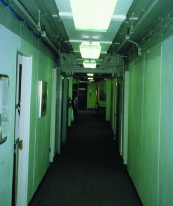 | 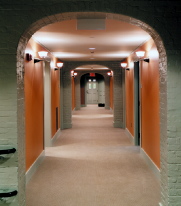 |
| Before and after photographs (left and above) of a ground-floor hallway show the dramatic visual improvement gained by hiding wires, pipes, lights, and sprinklers from view. | |
| Photographs by Peter Vanderwalker | |
The renovations just completed are a modern version of the same kind of magic: this time, architects Bruner/Cott & Associates were charged with the job of installing a handicapped ramp, an elevator, and two lifts in the Hall, and with making all other accretions of modernity, such as the wires, sprinklers, lights, and pipes that snaked along the ground floor corridors (bottom right), disappear. The Faculty Room (above), originally designed to serve as the University Chapel, had several reincarnations before acquiring its present function. The restoration there brings the space back to the green-and-tan color scheme of 1896, and to that era's wood floors and Oriental carpets. Later this year, thanks to faculty members Dudley and Georgene Herschbach, a portrait of Cecilia Payne-Gaposchkin, the first woman to gain tenure in the Faculty of Arts and Sciences through promotion, will be unveiled, bringing the number of portraits of women in the room to a grand total of two. "Presto, change-o" it's not; reaching parity on those walls will take some real magic--and no small measure of time.
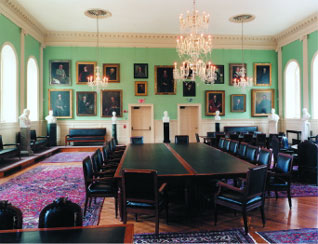 | 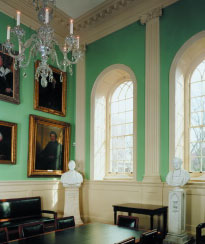 |
| The Faculty Room has recovered its 1896 look, while the first-floor entrance hall (below) has been restored to the 1813 colors of Bulfinch's day: richly colored hexagonal floor tiles, worn with age, have been relaid and the alls have been repainted based on analysis of the original colors found there. Some roundels, once sealed, have been refitted with glass. | |
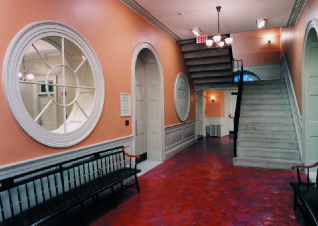 | Photographs by Peter Vanderwarker |





